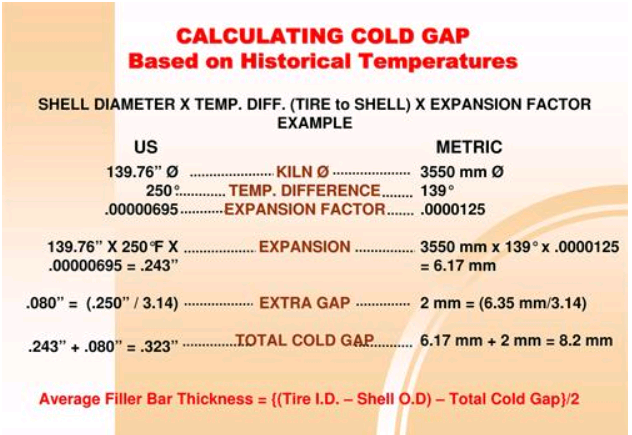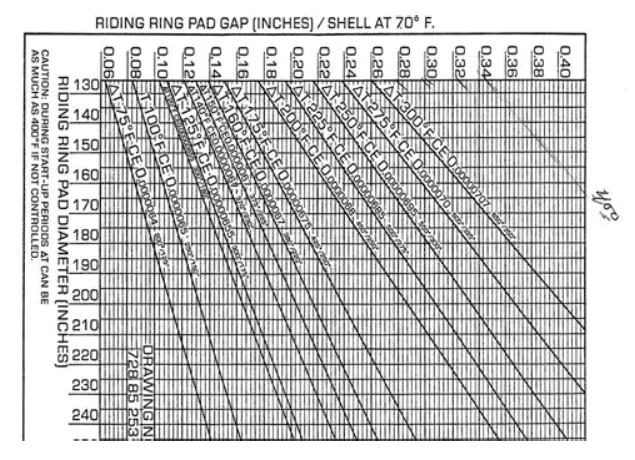Contents
To download the below and all other Useful Books and calculations Excel sheets please click here
To download the below and all other Useful Books and calculations Excel sheets please click here
Calculating Kiln Cold Gap using temperature differences

CALCULATING COLD GAP
If historical temperature information is available, long term averages of shell to tire temperature differences are a good way to calculate the cold gap/ filler bar thicknesses. If so, the filler bar thicknesses determined by creep reduction can be verified.
Kiln Shell Diameter x Temperature Difference between Tire and Shell x Expansion Coefficient = Reduction of the Filler Bar to Tire ID Gap. This is the differential expansion.
EXTRA GAP is a safety factor that we apply since we can only work with average temperature values and temperatures fluctuate during normal operation. Since these temperature differences cannot be strictly controlled and a locked tire is something to be avoided, leaving a residual or extra gap is the accepted norm.
The final step would be to take the cold gap, subtract it from the difference between tire bore and shell OD and divide by two to get the average new filler bar thickness. Individual bar thickness will vary if the original shell was manufactured without machining. If the shell was not originally machined measuring and numbering the old bars is recommended.

The chart above is taken from:
Recommended Procedures for Mechanical Analysis of Rotary Kilns, By R.P. Chapman, Published by Fuller Company 1985
As it turns out the coefficient of expansion (CE) is itself a function of temperature. Chapman has prepared this useful chart that not only eliminates the need to make any calculations for the required cold gap but has at the same time incorporated the changing value of the CE. CAUTION:
The above chart only gives the clearance needed for expansion. If you use the chart to work the example on the previous page you will see it clearly does not include the EXTRA GAP.
To make matters even more confusing these calculations do not correspond to the measured gap. The measured gap at the top will be about 50% larger due to shell sag or ovality since neither tire nor shell is round. The calculations are based on the shell and tire being perfectly round.
Posted by Walter Gebhart